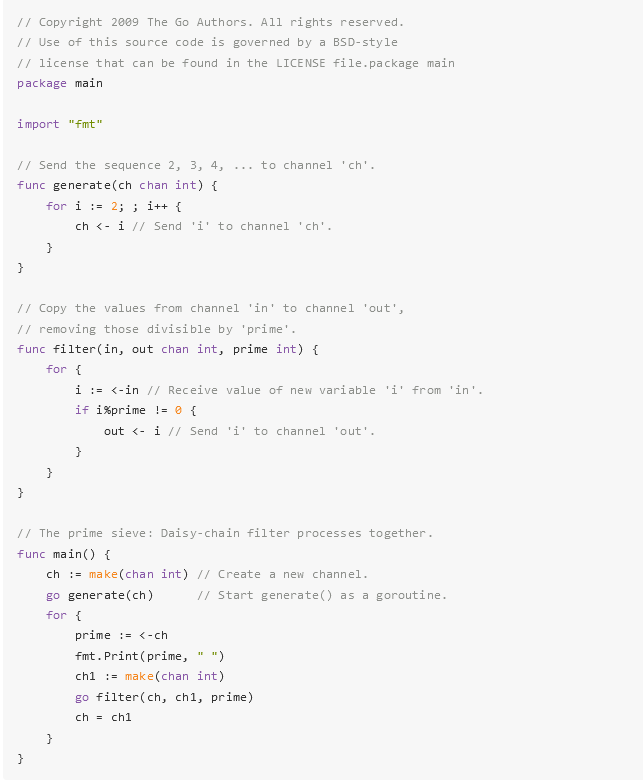// Copyright 2009 The Go Authors. All rights reserved.
// Use of this source code is governed by a BSD-style
// license that can be found in the LICENSE file.package main
package main
import "fmt"
// Send the sequence 2, 3, 4, ... to channel 'ch'.
func generate(ch chan int) {
for i := 2; ; i++ {
ch <- i // Send 'i' to channel 'ch'.
}
}
// Copy the values from channel 'in' to channel 'out',
// removing those divisible by 'prime'.
func filter(in, out chan int, prime int) {
for {
i := <-in // Receive value of new variable 'i' from 'in'.
if i%prime != 0 {
out <- i // Send 'i' to channel 'out'.
}
}
}
// The prime sieve: Daisy-chain filter processes together.
func main() {
ch := make(chan int) // Create a new channel.
go generate(ch) // Start generate() as a goroutine.
for {
prime := <-ch
fmt.Print(prime, " ")
ch1 := make(chan int)
go filter(ch, ch1, prime)
ch = ch1
}
}

#1
更多评论
generate用于产生序列
filter用于过滤这个数是否可以被某个素数整除
main中的for循环 会根据每一个产出的素数 新建一个协程过滤,且这个协程作为 过滤链的 最后1步
大致流程是
收到数据2,创建协程 过滤能被2整除的数, 使用 ch(即生成数据的channel)作为数据输入,ch1作为数据输出
协程收到数据3, 不能被2整除,输出3, prime收到3,创建协程 过滤能被3整除的数,并以协程2的输出作为输入,输出channel为ch,即prime 获取的值改为了 协程3的输出
#2

